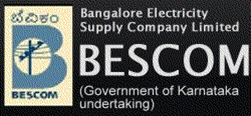HOT TOPICS
SPOTLIGHT AGENCIES
Urban Transportation reforms around the BMLTA concept
Written By silkboard - 2 July, 2008
Bangalore BMTC Bus BMLTA Privatization KSRTC Reforms suggestion
 In the telecom space, you have TRAI which is a national level regulatory body. Rightly so, since telecom networks have national footprint through interconnections, it need not be looked at as a state subject. Drawing a parallel for our state, think of extending BMLTA concept - a Karnataka state land transport authority (KSLTA). Why so? Because we want efficient two or three change connectivity from Whitefield to Haradanahalli as well, and not just to Jayanagar or Malleswaram. Just like the primary schools, every region needs good connectivity.
In the telecom space, you have TRAI which is a national level regulatory body. Rightly so, since telecom networks have national footprint through interconnections, it need not be looked at as a state subject. Drawing a parallel for our state, think of extending BMLTA concept - a Karnataka state land transport authority (KSLTA). Why so? Because we want efficient two or three change connectivity from Whitefield to Haradanahalli as well, and not just to Jayanagar or Malleswaram. Just like the primary schools, every region needs good connectivity.
KSLTA can have circles defined for local transportation, just the way telecom world has circles that span 1 or more states. There could be a fixed number of operators in each circle. Some rolling stock operators could be allowed the equivalent of "STD", meaning they can offer inter-circle transportation as well, but there would be separate set of norms for long distance (inter circle) routes. The norms would look like this
- Mandatory direct or indirect connectivity between hubs like Bangalore and remote and potentially non-profitable areas.
- Not mixing the local and long distance loads
- Adhering to price guidelines, there could be two - one for local and another for long haul commutes.
- Guidelines on safety, operating conditions and quality of service (similar stuff as in UP govt's note about opening up its road transport sector)
"Roaming" should be a strict no no. Meaning, bus registered in one circle must operate in that circle. The inter-circle buses must do only long haul (inter-circle) business. So, a bus going from Bangalore to Kolar can't stop at HAL to pick up passengers for Marathahalli and Whitefield.
Inter state routes would require some more thinking, as there could be different sets of norms across states. A "reciprocal slot" approach could work here, basically on the lines of how international air routes are worked out. So, as an example, there would be equal number of bus trips originating and ending at Bangalore and Chennai (say 100 from Chennai, and 100 from Bangalore). But a Bangalore based operator could "lease" out its route to a Chennai operator (like how Air India does on many international routes today, it can't afford to operate, so gives them out to that country's carrier).
To summarize all of above:
- In such a world, there wouldn't be a BMLTA, only a KSLTA. Why? Because you don't want to enhance public transportation only in Bangalore Metro Region, you need it everywhere. Its a basic, like primary education. Or else, you will be expanding Bangalore's boundary every 5 years, whereas, 'equal' development will create "peer" hubs around Bangalore without requiring special attentions and more B* bodies.
- There would be operating circles. Bangalore Metro region could be one. Mangalore-Udupi region could be another. There will be some study required to carve out these circles. Can't have too many of them, nor too few.
- Inter-state routes will be regulated as well, so that Karnataka based operators get eqaul share of any KA city's prosperity. Number of intestate routes could be driven by demand. But there must be some reciprocal arrangement.
- Last, KSRTC, BMTC etc can choose to continue to exist. They can be given the first right of refusal in all KA circles. They could be given a fixed percentage on all interstate routes. And if they get their act together (they certainly can, look, they are so much better than many other state's operators), perhaps KSRTC/BMTC will exist and prosper like BSNL and MTNL!
How does it sound? If someone can do a Karnataka map with possible "local transportation" circles, that will add some cheese here.
COMMENTS

tsubba - 4 July, 2008 - 02:58

Transport, Telecom and general gyan
navshot - 2 July, 2008 - 10:14
While it would be great if transportation in India could be revolutionized like telecom, they are completely different stories with different challenges. The telecom revolution happened as the govt. saw an opportunity untapped - mobile phones. If you see telecom, India was way behind in tele-density and new technologies like GSM/CDMA were pretty much standardized. Once policies were formulated, it was more like plug and play, as we had no wireless system in place, so moving from zero to something of this was relatively smooth. It did not interfere existing system much (though it almost did dislodge fixed line). Now you are seeing the fun with fights between CDMA and GSM and also 3G spectrum allocation. I foresee the future of telecom in India won't be so smooth as it has been in the last decade.
Now compare this with transport. We already have cities and roads and transport networks in place (no matter how messy). Anything we do, would have to be retrofitted to the existing system. The requirements are very particular to the region - you can't pick something from Europe and plug it here. Its not easy. I'm not sure if many private guys are excited with this.
Comparisons aside, I think we need to think of integrating multi-mode transport at the state-level too... atleast road and rail (if not air).
-- navshot

murali772 - 2 July, 2008 - 11:03
I fully agree with you that what we need is a KSLTA, more than just a BMLTA. Ours is a very big state, and without the benefit of a good rail network, buses are the only means of transport for people living in the far corners.
Canara and Udipi districts (apart from a few others) are non-KSRTC monopoly areas. Though the private services are supposedly efficient here, they are notorious for their rash and negligent ways. As such, a regulation umbrella is very much a necessity.
With proper regulatory and good policing mechanisms (asking too much?) in place, the fare regulation can be dispensed with, in my opinion. Market forces should balance these out, and you will probably have a fare regime lower than that of the KSRTC's - that's the Hubli-Dharwar experience, anyway.
To be effectve, regulation should be minimal, but strict.
Muralidhar Rao

Navshot - the physical footprint angle
silkboard - 2 July, 2008 - 12:53
Navshot, I share some of your thoughts. There are two things about telecom infrastructure (especially wireless) and its success,
- Has an advantage that developing it requires limited physical or surface footprint. This means that day to day operations require limited touchpoints with public and government.
- Reforms coincided with technology leapfrogs (wireless over wireline).
- Everyone, rich or poor, enjoys cheap rates, and all get same quality of service.
Story may look different for transportation sector. But look carefully on all above counts:
- Roads etc exist. We are not asking private parties to build new roads or serious new physical immovable infrastructure. The ask is for efficient use of existing resources (road surface).
- There are process/integration leapfrogs involved if not technological. We are talking world class information infrastructure (GPS driven), integration between multiple modes of transport, demand driven dynamic routing, and some more we will know only after private parties get in. Government may have a good records on innovations in some of these, but not all.
- We are made to believe that poor deserve dirty and crowded buses, whereas middle class will only travel in Volvos. There is no data (that I have seen) that justifies such big gap between the two tiers of services. Surveys will prove that provided buses are clean, speedy and reliable, you don't need air conditioning or jazz to pull in the middle class. Ex: Mumbai.
Job of regulation and enforcement becomes lot easier when government deals with private parties. It is one thing to expect KSRTC and BMTC drivers to be responsible on the road, and it is another thing to cancel an operator's license if its busses meet with more than 5 accidents an year.
Transportation, rather connectivity is a basic piece of infrastructure. Its time to deregulate it.
The only argument that could go against these transportation reforms - is the angle of welfare/social service. One can argue that govt could be doing us a favor by providing transportation services at very low costs. But BMTC and KSRTC aren't exactly losing money. And once the sector is reformed and more players come in, the space will generate more money by increasing the usage. Instead of paying the oil companies, we would be paying Rao transport company and Menon roadways.
Politicians too have something in it for them. Instead of dealing with strikes and public complaints, they would be doling out licenses to transportation companies. That is a much more 'powerful-feeling' or 'profitable' (depending on how you see it, we know there are both types of leaders) activity to indulge in.

navshot - 3 July, 2008 - 06:27
SB,
I agree on benefits of privatization and regulation thereafter. What I was referring to was that we can't compare this with telecom. As far as private guys go, I'm not sure how many big guys would be interested in intra-city services.
Apart from these, how would we integrate railways with this? Would it be possible to bring IR/SWR under KSLTA? If we can't, again we'd be just tackling in bits and pieces.
-- navshot
PRAJA.IN COMMENT GUIDELINES
Posting Guidelines apply for comments as well. No foul language, hate mongering or personal attacks. If criticizing third person or an authority, you must be fact based, as constructive as possible, and use gentle words. Avoid going off-topic no matter how nice your comment is. Moderators reserve the right to either edit or simply delete comments that don't meet these guidelines. If you are nice enough to realize you violated the guidelines, please save Moderators some time by editing and fixing yourself. Thanks!





